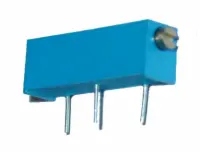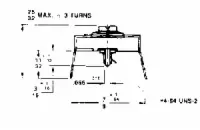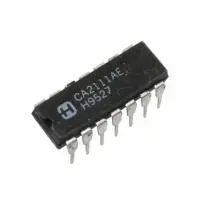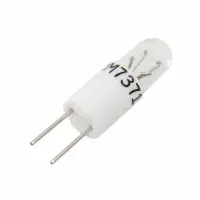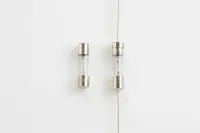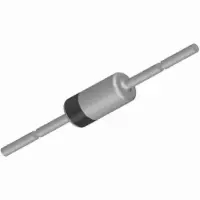Electronic Parts & General Supplies
Different people have different hobbies. Some like to read books. Others like to go for a leisurely jog.
And others like to build ham radios in their spare time.
Electronic hobbyists still exist to this day, and they’re one of the biggest reasons why electronic parts are available for commercial purchase. If you’re part of that talented, multi-faceted lot, then you’ve landed on the right page. There are tons of high-quality parts, components, and general supplies for purchase right here.
Practical Applications
Despite the fact that technology has rapidly changed how we interact with the world, there are still people who like to understand electronics via good old-fashioned building. They’re all-too happy to spend hours fiddling with electronic components to make a radio receiver or transmitter—despite the smartphone in his pocket. Some people are fine spending a whole month stripping printed circuit boards (PCBs) of their parts just to rebuild a new PCB with the same circuit board components.
Electronic components are pretty self-explanatory. They’re little parts—or simple micro-machines—that have their own function and unique composition. Together, they dictate the specific functionality of an electronic device.
You’re probably already familiar with most of them:
Batteries
Switches
LEDs
Sockets
Fans
Fuses
Motors
Transistors
Diodes
Every electronic component has a practical application, although some are more commonly used than others. For instance, batteries are a source of energy. They’re used for powering most handheld devices, from simple toys to high-end laptops. Fuses protect other components from overload due to excessive current or voltage. Circuit breakers do much of the same—one switch can protect a whole system from short circuiting.
Speaking of switches, these electronic components are capable of interrupting current. They’re often paired with relays, transistors, capacitors, and other similar parts to control power via electromagnetic or electromechanical means.
To truly understand that practical application of all electronic parts and supplies, you’d have to deep dive into each of them individually. Fortunately, we’re here to give you a pretty succinct overview to get you started.
Types of Electronic Parts & Electronic Components
Below, we’ve listed out the most common electronic parts and components that hobbyists often purchase. Take a look to see our brief overview, explanation, and—most importantly—recommendation.
Electronic Enclosures
Electronic enclosures typically look like cabinets made out of metal, molded plastic, and other similar material. They’re also usually the first (and only) thing people see when using different equipment. Depending on the situation’s parameters and regulations, the electronic enclosure may have one or two “special” features, suchs as waterproofing or heat dissipation.
For US hobbyists, it’s important to note that the National Electrical Manufacturers Association (NEMA) has published specific industry standards to measure the enclosure’s performance. Various classes of electrical closures are subject to different NEMA standards such as corrosion resistance, water resistance, and the like.
What is it for?
An electronic enclosure does, indeed, function like a cabinet. It houses electronic equipment and is usually where other electronic components like switches, knobs, and displays are mounted. This is done to guard against electrical shock, effectively protecting both the contents and the users from harm.
Our Recommendations
Plastic Project Enclosures—typically the best type for mounting displays and PCBs. Also very sturdy and easy to maintain
Plastic Project Boxes—one of the more affordable types of enclosures
Aluminum Electronic Enclosures—structurally sound, compact, and offers complete protection; best choice for housing equipment and keeping it safe
Electronic Kits
Electronic kits are, in a sense, a package full of different electronic components and general supplies that people—typically hobbyists—use to build electronic devices. They usually contain different electronic parts, including:
Circuit diagrams (schematics)
Assembly instructions
Printed circuit board (PCB)
Circuit board components
Other types of prototyping board
There are two types of electronic kits: those that build single devices or systems, and those that are meant for educational demonstration. The former typically use PCBs for mounting soldered components. Depending on your skill and experience level, the instructions may be incredibly extensive or virtually nonexistent. Other single-device kits only contain a PCB and assembly instructions, leaving the hobbyist to source the different components.
What is it for?
Aside from using them to create electronic gadgets, electronic kits are primarily used for education and entertainment. They’re great for learning how electricity and electric circuits work via a hands-on experience (that most people can generally appreciate). Back then, they were also seen as a cheaper alternative to buying the fully assembled gadget.
Some electronic kits can make devices as complex as colored television sets, high-end audio amplifiers, and even basic computers.
Our Recommendation
Internet of Things—great for general entertainment; Internet of Things electronic kits seamlessly blend new technology with old
Audio Kits—best for learning how to construct AM radios, HAM radios, stereo amplifiers, and more
Sound Generator Kits—for creating devices that don’t typically produce sounds; think voice chips
RF Modules—if you want to create your own inexpensive radio frequency receivers, transmitters, and transceivers, these electronic kits are your best bet
Hand Tools
As the name suggests, hand tools basically refers to the equipment you’d use when working on an electronics project. They’re not too complicated to operate. In fact, the whole point of them is to make your work easier. Most of them don’t need a power source or some type of battery to work. They’re simple machines capable of functioning under most any circumstance. Some of the most commonly-used hand tools for electronics are:
Pliers
Wire Cutters
Wire Wrapping Tools
Crimpers
Extraction Tools
Cutting and Stripping Tools
Screwdrivers
Tweezers
Soldering Irons
It is important to note that children will need adult supervision when handling such tools, as they may cause harm or injury if used incorrectly.
What is it for?
Different hand tools, just like different electronic components, all have their own unique functions. Some cut cables and wires while other connect them. Some can be used with live current, others can’t. Some are used for handling and removing small electronic supplies, others are used for controlling and mounting.
Our Recommendation
Pliers—different plier styles (tapered needle nose, bent nose, needle nose, etc.) for different scenarios
Crimpers/Crimping Tools—best for securing components (usually wires) between two pieces of metal
Cutters & Strippers—working with wires can be tough, and you can’t just use any old pair of scissors (or worse, your bare hands) to cut and strip pieces of it. Best to use industry-grade cutters and strippers for quick, clean work
Screwdrivers—we highly recommend getting a screwdriver with interchangeable heads
Connectors
Although used primarily for creating temporary or semi-permanent electrical connections, connectors can come in a variety of shapes, sizes, and complexities. They’ll sport either pins or sockets depending on their “gender” (so to speak). Male connectors sport pins that slide into place with the recessed sockets on female connectors, effectively forming a connection.
You can usually tell a connector’s function just by looking at its design. Depending on where and what they’re used for, some connectors are made with extra resistance against high vibrations, extreme temperatures, water, fire, dirt, and the like.
What is it for?
In electronics, connectors are used to immediately disconnect or interrupt a circuit path without damaging the entire system. These electro-mechanical devices are capable of easily disrupting the voltage flow at a moment's notice. As you can imagine, this makes them suitable for a variety of applications in different fields—from consumer electronics to medical equipment.
Based on the type and manufacturer, some connectors may have extra features, such as easier connection, higher durability, programmed insulation, and so on. But generally speaking—staying true to their name—connectors connect the internal parts of a circuit.
Switches
Switches are as simple or as complex as they need to be. These electronic components are basically used as triggers or catalysts that start and stop an entire circuit’s function.
The simplest type of switch is made of two electrical conductors that come into contact via an actuating mechanism. Whatever the setup, a switch basically needs at least a pair of wire-connection terminals that can be connected or disconnected as needed. Some types of switches are:
Toggle
Pushbutton
Selector
Joystick
Limit
Proximity
What is it for?
In electronics, switches are used to interrupt the flow of electrons in a circuit. The electronic circuit in question will then react or respond accordingly. The simplest illustration of this is, in fact, a light switch. When the switch is on, the circuit is blocked, the light stays off. But when the switch is off (or deactivated), the circuit flows and the light turns on.
Relays
Relays are electronic components that function like switches. There are two types: electromechanical relays, or EMRs, and solid-state relays, or SSRs.
EMRs are composed of a frame, a coil of wire (typically copper), an armature, a spring, and contacts. SSRs are a little simpler in composition. They have one input circuit, one output circuit, and one control circuit.
What is it for?
Relays are capable of opening and closing circuits via electromechanical or electronic means. They don’t need much power to operate, which is why they’re often leveraged against other circuits with larger amounts of current. This also makes them great for controlling several circuits with just one signal.
In the case of EMRs, the frame holds all the electronic parts that the relay needs to function. Power energizes the copper coil to create a magnetic field. This magnetic field effectively moves the switch to either close or open the circuit. SSRs, on the other hand, function by transferring power signals between all three circuits.
Our Recommendation
Pre-Wired Dual Relay Socket—great for general purpose use; casual projects and hobbies that require six 14 AWG wires
Capacitors
A capacitor is a passive, two-terminal, load-type electronic component that stores energy electrostatically. It’s very much like a battery in that regard. However, a capacitor is not a voltage source, as it doesn’t hold the energy indefinitely. It can charge and discharge the resting electric charge in a split second.
Capacitors are characterized by two (2) electrical plates separated by an insulator and two (2) electrical connections. When voltage is applied, these plates develop an electric field across the insulator. This causes them to accumulate a positive and negative charge that they will, eventually, discharge once connected to another load.
What is it for?
These electronic components are used to safely block direct current while simultaneously allowing an alternate current to pass. Many hobbyists also use them to tune radios (in resonant circuits) to specific frequencies. For power transmission systems, capacitors can stabilize voltage and power flow. They can also smoothen out the output of power supplies in an analog filter network.
Our Recommendation
High Voltage Ceramic Capacitors—non-polarized electronic components with low capacitance change and predictable linear. Great for temperature compensation in resonant circuit applications
High Voltage Radial Capacitors—single-ended capacitors great for mounting on PCBs via through-hole solder
Polyester Capacitors—great for applications with high-surge currents, AC power, and higher frequencies, as polyester capacitors can reduce ohmic losses and parasitic inductance
Diodes
There are two common types of diodes; semiconductor diodes and vacuum tube diodes. Semiconductor diodes—also known as p-n junction diodes—are made of silicon, germanium, selenium, and other semiconducting materials (as the name suggests). They have both a p-type (positive) semiconductor and an n-type (negative) semiconductor. These two semiconductors combine to create a depletion zone that effectively blocks currents of all types, strength, and charge.
Vacuum diodes—also known as vacuum tube diodes—are made of a sealed vacuum glass tube with two electrodes (a cathode and anode). The same depletion zone that halts all current flow is created when the cathode is heated up, and it can be cancelled by making the anode positive.
What is it for?
Diodes are conducting path elements that control the flow and direction of electric currents. Specifically, they only allow the current to flow in one direction at a given time. These two-terminal electronic parts are basically the one-way streets of circuit board components.
Diodes are commonly used to convert AC (alternating current) into DC (direct current), but they have other practical uses, besides. For instance, diodes are great for providing protection against sudden voltage surges or power overloads.
Our Recommendation
High Speed Switching Diodes—great for general application that requires switching speed of no more than 4 nanoseconds
Optocouplers—these electronic components can provide electrically isolated coupling between the given input and output by using light waves to transfer electrical signals
Potentiometers
Potentiometers—also referred to as “pots” or “potmeters”—are variable, three-terminal resistors that are manually adjustable. Two of those three terminals are connected to both ends of a resistive element while the third one is connected to a changeable sliding contact—also known as a wiper. The wiper can be made to move over the resistive element. Its position determines the potentiometer’s output voltage.
Potentiometers come in a variety of styles and designs as well. The most common is the single-turn rotary potentiometer—the kind that is often used to control the volume on a radio. Other rotary types are:
Multi-Turn Pot—capable of multiple, one-direction rotations
Concentric Pot—dual potentiometer that can be adjusted by concentric shafts
Servo Pot—motorized potentiometer
There are also linear potentiometers:
Slide Pot—single linear slide potentiometer
Dual-Slide Pot—controls two parallel pots
Motorized Fader—can be automatically adjusted by servo motor
What is it for?
In terms of practical application, potentiometers can be used to control electrical devices—think the volume controls on a radio or audio player. They can also be used as position transducers i.e., a joystick for gaming consoles. Other practical applications include voltage divider and rheostat.
But because the power dissipated in the potentiometer is typically comparable to the power in its controlled load—as is usually the case—potentiometers are rarely used (and rarely recommended) for directly controlling significant amounts of power.
Resistors
Resistors are two-terminal electronic components that are designed to resist the flow of the current. They’re possibly one of the simplest electronic parts available, made of just copper wire and an insulating material. This is why they can be found in practically every electrical circuit. The copper wire is wrapped around the insulating material, forcing the current to flow through it. The more times the wire is wrapped (and the thinner it is), the greater its resistance and ability to control the voltage.
What is it for?
Practically speaking, resistors are used to control currents and keep the voltage level at safe, manageable numbers. By regulating the voltage level, the equipment is much less at risk of overheating. They can also be used to divide voltages, terminate transmission lines, and adjust signal levels in certain circuits.
Resistors are typically paired with transistors and LEDs, as both electronic parts can be quite sensitive to electrical current. Too much current can potentially damage them.
Batteries
Everyone—regardless of whether or not they’re hobbyists—has gone to an electronic parts store and purchased a battery at one point in their life. Perhaps the most common item on this list, batteries are used mainly as a source of power for handheld gadgets.
Batteries, as circuit board components, basically store chemical energy and convert it into usable—but limited—electronic energy. This electronic energy is then used to power different circuit systems for a finite amount of time. The battery’s lifespan (or how long it can power your device) actually depends on the length of the conversion process. Some batteries finish this process in a couple of days. Others take weeks, months, or even years to complete.
What is it for?
As a portable source of energy, many batteries are used to power handheld devices, such as smartphones and remote control devices. They can be as small—think wrist watch batteries—or as large—think laptops—as they need to be. And, as mentioned earlier, different batteries will have different lifespans. They’ll need to be changed out once the chemical conversion is done, otherwise you’ll get no reaction or no power for your system.
The process of constantly switching out burnt batteries for new ones can be tedious and expensive, which is why rechargeable batteries are gradually becoming the new normal.
Fuses
Fuses are electronic components designed to separate when exposed to excessive current, effectively opening the circuit it is integrated in and stopping the current. Think of them as the failsafe devices in electronics.
The most important component of a fuse is a metal wire or strip encased within a safety sheath. This metal strip melts when met with voltage levels that go beyond what they were programmed to handle. The electronic circuit is broken at that point and the current surge is cut.
What is it for?
Fuses are basic electrical safety devices that protect an electrical circuit from overcurrent or voltage surges. They’re considered essential circuit board components, regardless of what you’re building, because the protection they provide can drastically change the direction of your project. There are thousands of different fuses available on the market with different current and voltage ratings. Other features are breaking capacity and response time.
Circuit breakers are viable alternatives to fuses, but they have significantly different characteristics and therefore shouldn’t be seen as acceptable replacements.

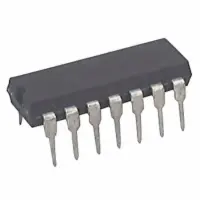
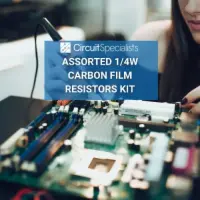
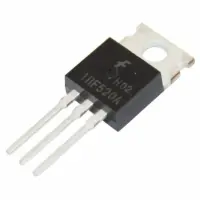
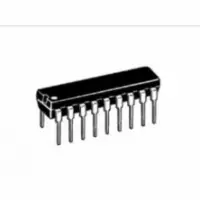
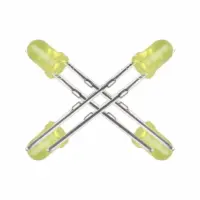
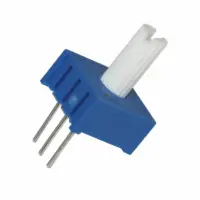
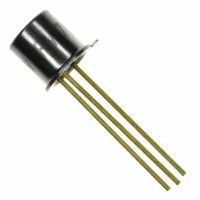

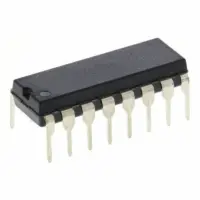


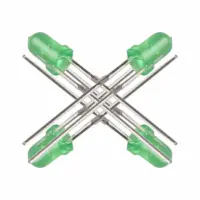

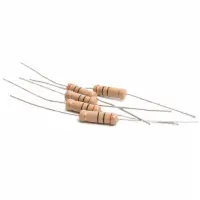
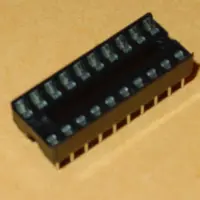
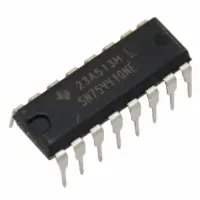
_thumb200.webp)
